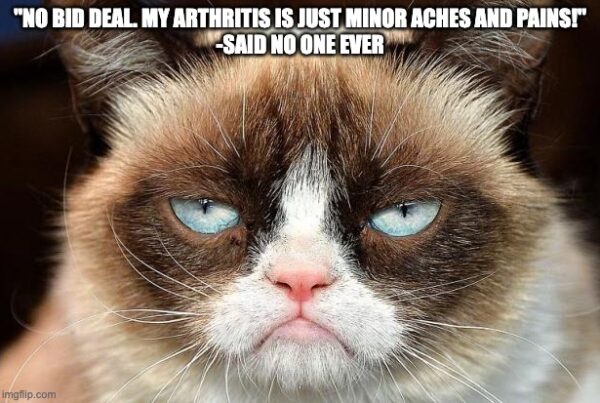Whiplash is a sneaky little devil. He rarely makes his presence known, attacking without warning, usually from behind. Coward.
As a chiropractor for whiplash in Springfield, Illinois, I’ve seen his diabolical schemes play out time and time again. Over a million people a year suffer from whiplash, most cases stemming from car accidents – whiplash is definitely a backseat driver – but also contact sports, falls, trauma, and…
Whiplash is like that Eve 6 banger Inside Out. It swallows our pride and chokes on the rind leaving us empty inside. It swallows our doubt, turns it inside, out finding nothing but faith in nothing. It puts our tender heart in a blender and watches it spin round to a beautiful oblivion. Then it’s through with us.
During a whiplash injury, the head is thrown about and injury can be sustained to the bones in the spine, the spinal discs, and the ligaments, muscles, nerves, and tissues of the neck. Whiplash doesn’t need to cause a huge scene, a car traveling at just 8 mph is enough to do the trick. Adrenaline and shock often disguise the immediate pain and many “tough guys” will think they’re all right. It may take hours to start noticing the symptoms and they’ll become more severe.
Not addressing whiplash early creates the potential for it to become a chronic neck pain injury that people may deal with for the rest of their lives. At the Springfield Wellness Center, our job is to stop that from happening. Here are five ways to tell if we’ve become whiplash’s next victim.
A “Stuck” Head
The first tell-tale sign of a whiplash injury is a stiff neck and decreased range of motion. After an injury, a doctor, sports trainer, or camp counselor may ask if we are in pain. The tough guy will respond “no” by shaking his head. Turns out it was a trick question because the stiffness, pain, and immobility in the neck will make turning the head side to side quite the challenge.
After an accident, the muscles, tendons, and ligaments in the neck can become strained or sprained. Often the force will knock our vertebrae out of alignment. Not treating this can weaken the neck muscles causing instability in the neck leading to chronic neck pain.
Headaches and Cognitive Problems
Our poor brain goes through a lot during a whiplash injury.
The force of the brain crashing against our skull often will cause a bruise to the brain. Imagine dropping a peach on the floor of a Trader Joe’s? No one is happy about that, not you, the peach, or Joe. This brain bruise is known as a concussion. Concussions, which don’t always make us lose consciousness cause:
- Headaches
- Focus and memory issues
- Personality changes
- Dizziness
- Insomnia
- Anxiety
- Irritability
Not treating a concussion is very dangerous. They can lead to seizures and death. Yes, death. So it really goes without saying, get checked immediately. Even if it might be an overreaction. This is one of two instances where an overreaction may be the right choice. Concussions and someone finishing the milk and putting the empty carton back in the refrigerator.
Ringing in the Ears
We’re not talking about the church’s Christmas bell choir performing Carol of the Bells here. We’re talking about a persistent and vexing ring.
The force of a whiplash injury can cause a subluxation – misalignment of the vertebrae. The misaligned spinal bones put pressure on the nerves causing pain and dysfunction. The nerves in the neck control the face and sensory functions, which explains the irritating ring. Again, don’t suffer through this. Not treating tinnitus, a fancy way to say ‘ringing in the ears’, can cause long-term hearing impairment.
Chewing and Swallowing are Painful
Chewing and swallowing are two of the most amazing things we get to do as human beings. Food is fuel, but it can also be absolutely delicious. This one time I went to Mexico with my friend just so we could eat at this very famous Dutch restaurant’s pop-up and I almost wept because the food was so good. I didn’t cry though, because I’m not a baby.

During a whiplash injury, our head and neck hyperextend, which is a big no-no. The hyperextension causes the misalignment of the jaw and damage to the neck’s soft tissue. Issues with the jaw joint are known as TMJ disorders and they make eating, speaking, yawning, even kissing, an absolute nightmare.
Body Pain and Tingling Sensation
A tingling sensation might sound like fun…
…but it is not. It’s also not normal. Whiplash takes a toll on the cervical spine. The same subluxations that can cause ringing in the ears can also cause pain and tingling sensations throughout the body, including the arms and legs. Because of the trauma that the spine and muscles go through during a whiplash injury, lower back pain is also a possible warning sign.
The body is a natural healing machine and, over time, some of these symptoms may fade, but a recent study showed that after 20 years, 50% of patients were still dealing with whiplash symptoms following an accident. Whiplash injuries put patients at risk for long-term spinal cord injuries and nerve dysfunction.
There are a variety of natural whiplash treatments that will address the underlying issues of the injury to prevent pain at the source. Popping a few pills may help to relieve the pain and symptoms, but that’s sort of like trying to plug Old Faithful with a wine cork – ineffective and idiotic.
Chiropractic care is the gold standard when it comes to issues with the spine. Chiropractors are spine experts! At the Springfield Wellness Center, we realign the spine to relieve pressure on the spinal cord and increase circulation to stimulate the body’s natural healing capabilities. Proper spinal structure doesn’t just relieve pain, it helps prevent injury and illness in the first place.
Call our office or schedule a time to meet with one of our amazing doctors. There’s no reason to risk long-term damage because of fear of overreacting. It could be nothing, or it could be a big something. We’re here to help figure out which it is and jumpstart the healing process.



